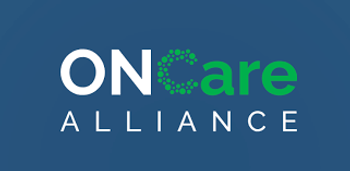
- December 2022
- Volume 28
- Issue 8
- Pages: SP594
PBM Fees Put the “GER” in Danger for Specialty Pharmacies
Should medically integrated specialty pharmacies (MIPs) be forced to lose money in order to serve their patients? What if a pharmacy would lose more than $10,000 by filling a single prescription? Many MIPs face this situation because of a direct and indirect remuneration (DIR) fee known as a generic effective rate (GER).
This article will discuss the real-world consequences of GER fees within specialty pharmacies, specifically oral oncology pharmacies. It is important to note that other pharmacies dispensing high-cost generics also may be affected.
Pharmacy benefit managers (PBMs) began as intermediaries between insurers and providers.1 In recent years, mergers and acquisitions have led to PBMs being under the same roof with insurers, specialty pharmacies, and, in some cases, provider services. Three PBMs (Express Scripts, CVS Caremark, and OptumRX) control approximately 89% of the market.2 All 3 PBMs also own specialty pharmacies, making it lucrative for them to keep prescriptions within the pharmacies they control.
PBMs and MIPs often struggle over which entity should provide pharmacy care for patients. MIPs are specialty pharmacies embedded in the patient’s medical clinic that offer several advantages over PBM-owned specialty pharmacies.3,4 PBM pharmacies may need assistance from providers to obtain necessary information when filling specialty prescriptions, which can delay patient care. MIPs have access to the patient’s chart, allowing them to easily retrieve needed information such as the appropriate International Classification of Diseases, Tenth Revision codes, allergies, past medical history, and patient demographics. The physician’s office is easily accessible to the MIP for collaboration and order clarification. Often, the patient may meet directly with the pharmacist for face-to-face education or to provide signatures for needed grants. MIPs are skilled at working with patients to obtain free drugs from the manufacturer when needed. This service is often not offered by other specialty pharmacies.
PBMs typically mandate that their commercially insured patients use the PBM’s specialty pharmacy.5,6 CMS oversees Medicare and allows patients to choose their specialty pharmacy. However, PBMs may prevent Medicare patients’ migration to other pharmacies through low-paying contracts or high DIR fees.7 Nebulous contracts and high DIR fees may keep MIPs from contracting with PBMs, which prevents the MIP from filling prescriptions for PBM-insured patients.
Between 2010 and 2020, retroactive DIR fees increased by more than 100,000%.8 DIR fees are charged by PBMs outside of administration fees and are often collected after the point of sale (POS) and do not reflect the pharmacy’s actual reimbursement at the time of dispensing. Traditionally, DIR fees are based on so-called pharmacy performance metrics.9 DIRs have recoupment fees of up to 15% of the adjudicated price paid to the pharmacy for dispensing a prescription. PBMs develop and manage specific criteria used to score the contracted pharmacy.10
The scoring process varies from insurer to insurer and may include unachievable goals for specialty pharmacies focused on dispensing oncology medications. Unrealistic goals may include placing adherence ratings suitable for chronic diseases, such as type 2 diabetes or hyperlipidemia, on high-cost oncology drugs. Cancer drugs often require temporary discontinuation of treatment due to the adverse effect profile unique to that class of drugs and cancer disease state. For instance, pancytopenia is a common adverse drug reaction in many oral chemotherapy agents. In this example, the MIP prescriber may temporarily discontinue the patient’s oncolytic until their pancytopenia is resolved. However, PBMs may interpret this as nonadherence and increase DIR penalties.
Increasingly, PBM contracts are incorporating GER fees. These fees are not based on pharmacy performance metrics but instead are calculated on a drug’s maximum allowable cost, wholesale acquisition cost, or average wholesale price (AWP).11 PBMs may contract with an entire network of pharmacies to pay a cumulative GER across generics dispensed by network pharmacies. GERs based on AWP may pay as low as AWP minus 85% to 89%.12 Although this may be appropriate for older, more competitive generic products, it does not work for all generics, including many cancer medications. AWP prices and the cost for generic drugs may be similar when the generic is first released but they tend to separate over time as the actual cost for older generic drugs continues to fall. Generic medications with actual costs exceeding 10% to 15% of their AWP will cause the pharmacy to lose money with this type of contract.
For example, a new generic version of sorafenib originally came to market with an AWP of more than $25,000 for a month’s supply. The actual cost of the drug was as high as 60% of the AWP when it was first released. If a PBM pays the pharmacy at AWP minus 85%, the pharmacy could lose more than $11,000 each time the drug is dispensed (Figure).
In this example, the pharmacy would lose $11,250 each time this prescription was dispensed. Although dispensing the brand-name drug is an option and may remain profitable, the PBM may mandate the pharmacy to dispense the generic medication unless the prescriber or patient requests explicitly otherwise. Pharmacies losing money to GER fees may become more prevalent as more high-cost oncology drugs become generic.12
GER fees may occur at the POS or, more commonly, as a retroactive “take back” fee.5,6 POS recoupments allow pharmacies to identify financial losses when dispensing prescriptions. Retroactive GER fees may remain hidden at POS, allowing the PBM to claw back money later as single or multiple DIR recoupment(s). This may go unrecognized by the pharmacy initially.
Reconciled GER rates may not occur until the end of the year when the pharmacy receives a report called a true-up.6,13
Contracts between the MIP and the PBM may be directly negotiated between the 2 entities or, more often, may be controlled by a pharmacy services administrative organization (PSAO). PSAOs negotiate pharmacy network contracts and perform various office operations for pharmacies. PSAOs’ primary customers, and those they are most familiar with, are usually small chains or independently owned pharmacies.13 As oncology specialty pharmacies are an even smaller niche, PSAOs may not consider tailoring their contracts to this specialty. The role of PSAOs is to protect pharmacies from unreasonable takebacks. MIPs that dispense oncology medications should work closely with their PSAO when contracting to identify required benchmarking and unreasonable metrics. The PSAO should be able to identify and communicate potentially harmful GER contracts for the specialty pharmacy.13,14
The contractual agreement between PBM and PSAO can involve stipulations regarding DIR fees potentially hidden in confusing language that could mislead the pharmacy’s understanding of reconciliations.13,15 This lack of transparency can be detrimental both to MIPs and their patients. It can drive specialty pharmacies to leave the contract with the PBM for financial reasons, pushing patients to go to cumbersome and less-accessible specialty pharmacies. Pharmacies discovering unreasonable GER fees should immediately contact their PSAO to discuss options for improved transparency. The pharmacy also could consider contacting the PBM about reasonable alternatives, such as addendums, which would exclude new generic drugs to market from the high GER rates.13
GER fees may be harmful to both patients and pharmacies. Patients may pay excessive co-payments if GER fees are adjudicated after POS. PBMs may take back thousands of dollars on a prescription that a patient has already purchased. The true-up potentially could have decreased the purchase price of the prescription, which would have also reduced the patient’s co-pay. In response, several states have enacted laws effectively eliminating post-POS GER fees.16 Additionally, CMS issued a final rule eliminating retroactive DIR fees in Medicare Part D plans beginning in 2024. Although this will not eliminate DIR or GER fees, this will move all DIR fees to POS. By eliminating true-ups, pharmacies can effectively determine actual prescription payments to avoid financially toxic contracts. CMS also would benefit from the lower prescription price at POS.8
MIPs are embedded in oncology medical clinics, allowing for effective patient care in collaboration with various health care disciplines. MIPs have had to contend with growing DIR fees shrinking the pharmacy’s profit margins for several years, but new GER fees potentially could deal the final blow to MIPs’ survival. MIP pharmacies could lose more than $10,000 per prescription when dispensing newly marketed high-cost generics. These fees may be hidden for an extended period, leading to financial devastation for smaller MIPs once discovered. Worst of all, these fees may make MIPs unable to contract with PBMs, forcing the pharmacy’s patients to rely on PBM-owned pharmacies and delay life-saving oncology medications. New laws will prevent these hidden fees in the future, but will they come soon enough to save MIPs? The livelihood of MIPs, and in turn patient care, is of the essence.
Author Information
Darrell L. Willyard, PharmD, is the director of pharmacy services at Oklahoma Cancer Specialists and Research Institute in Tulsa. He has 20 years of hospital pharmacy experience, including 18 years as director of pharmacy services for the state’s largest oncology clinic. Alexis V. Fanshier received her bachelor’s degree in chemistry from Southwestern Oklahoma State University and is scheduled to receive her doctorate of pharmacy in December 2022. The authors report no conflicts of interest.
References
1. Royce TJ, Schenkel C, Kirkwood K, Levit L, Levit K, Kircher S. Impact of pharmacy benefit managers on oncology practices and patients. JCO Oncol Pract. 2020;16(5):276-284. doi:10.1200/jop.19.00606
2. Pharmacy benefit managers. National Association of Insurance Commissioners. Updated April 11, 2022. Accessed November 28, 2022. https://content.naic.org/cipr-topics/pharmacy-benefit-managers
3. Darling JO, Starkey AJ, Nubla JJ, Reff MJ. Financial impact of medically integrated pharmacy interventions on oral oncolytic prescriptions. JCO Oncol Pract. 2022;18(7):e1225-e1230. doi:10.1200/op.22.00022
4. Medically integrated oncology pharmacy promotes patient-centric care. J Hematol Oncol Pharm. 2021;11(6):19097.
5. “Performance” based DIR fees: a rigged system with disparate effect on specialty pharmacies, Medicare Part D beneficiaries and the U.S. healthcare system. Frier Levitt, LLC. March 2017. Accessed October 31, 2022. https://communityoncology.org/wp-content/uploads/2018/06/NASPWhitePaperonDIRFees.pdf
6. COA 2022 PBM dirty tricks exposé report. Community Oncology Alliance. April 6, 2022. Accessed October 19, 2022. https://communityoncology.org/featured/pbm-dirty-tricks-expose/
7. DIR fees: direct and indirect remuneration fee. National Association of Chain Drug Stores. July 9, 2019. Accessed November 24, 2022. https://www.nacds.org/dir-fees/
8. CMS eliminates retroactive DIR fees. American Pharmacists Association. Published May 3, 2022. Accessed November 24, 2022. https://www.pharmacist.com/Pharmacy-News/cms-eliminates-retroactive-dir-fees
9. True North Political Solutions. White paper: DIR fees simply explained. Pharmacy Times®. October 25, 2017. Accessed November 24, 2022. https://www.pharmacytimes.com/view/white-paper-dir-fees-simply-explained
10. Pharmacy benefit managers and their role in drug spending. The Commonwealth Fund. Published online April 22, 2019. doi:10.26099/njmh-en20
11. Wormington T. Meeting the challenges of effective rate contracts. Pharmacy First. September 30, 2020. Accessed October 19, 2022. https://www.pharmacyfirst.com/meeting-the-challenges-of-effective-rate-contracts/
12. What GER means for pharmacies. Amplicare. April 25, 2019. Accessed November 24, 2022. https://www.amplicare.com/articles/what-gers-mean-for-pharmacies
13. Jones T, Lea B. What pharmacies should know about DIRs, GERs, and BERs. Good Neighbor Pharmacy. August 18, 2021. Accessed November 27, 2022. https://www.wearegnp.com/insights/what-pharmacies-should-know-about-dir-fees-and-ger-and-ber-recoupments
14. Pharmacy services administrative organizations (PSAOs) and their little-known connections to independent pharmacies. Pharmaceutical Care Management Association. Accessed October 27, 2022. https://www.pcmanet.org/wp-content/uploads/2021/01/PSAO-Report_Health-Evaluations.pdf
15. GER and DIR fees from PBMs. Brown & Fortunato. February 23, 2021. Accessed November 27, 2022. https://www.bf-law.com/blog/ger-and-dir-fees-from-pbms/
16. Barbarito AJ, Mizeski T, Morgan LW. Indiana law prohibiting PBM post -point of sale fees, reforming MAC protections and other protections for independent pharmacies now in effect. Frier Levitt, LLC. August 11, 2020. Accessed November 7, 2022. https://www.frierlevitt.com/articles/indiana-law-prohibiting-pbm-post-point-of-sale-fees-reforming-mac-protections-and-other-protections-for-independent-pharmacies-now-in-effect/
Articles in this issue
about 3 years ago
Innovation in a Time of Scarcityabout 3 years ago
Clinical Updates: Fall 2022about 3 years ago
Managed Care Updates: Fall 2022about 3 years ago
FDA Actions: Fall 2022about 3 years ago
OneOncology Physician Leadership Conference: Inaugural Meeting 2022about 3 years ago
COA Payer Exchange Summit: 2022 Coverageabout 3 years ago
ACCC National Oncology Conference: 2022 CoverageNewsletter
Stay ahead of policy, cost, and value—subscribe to AJMC for expert insights at the intersection of clinical care and health economics.








































